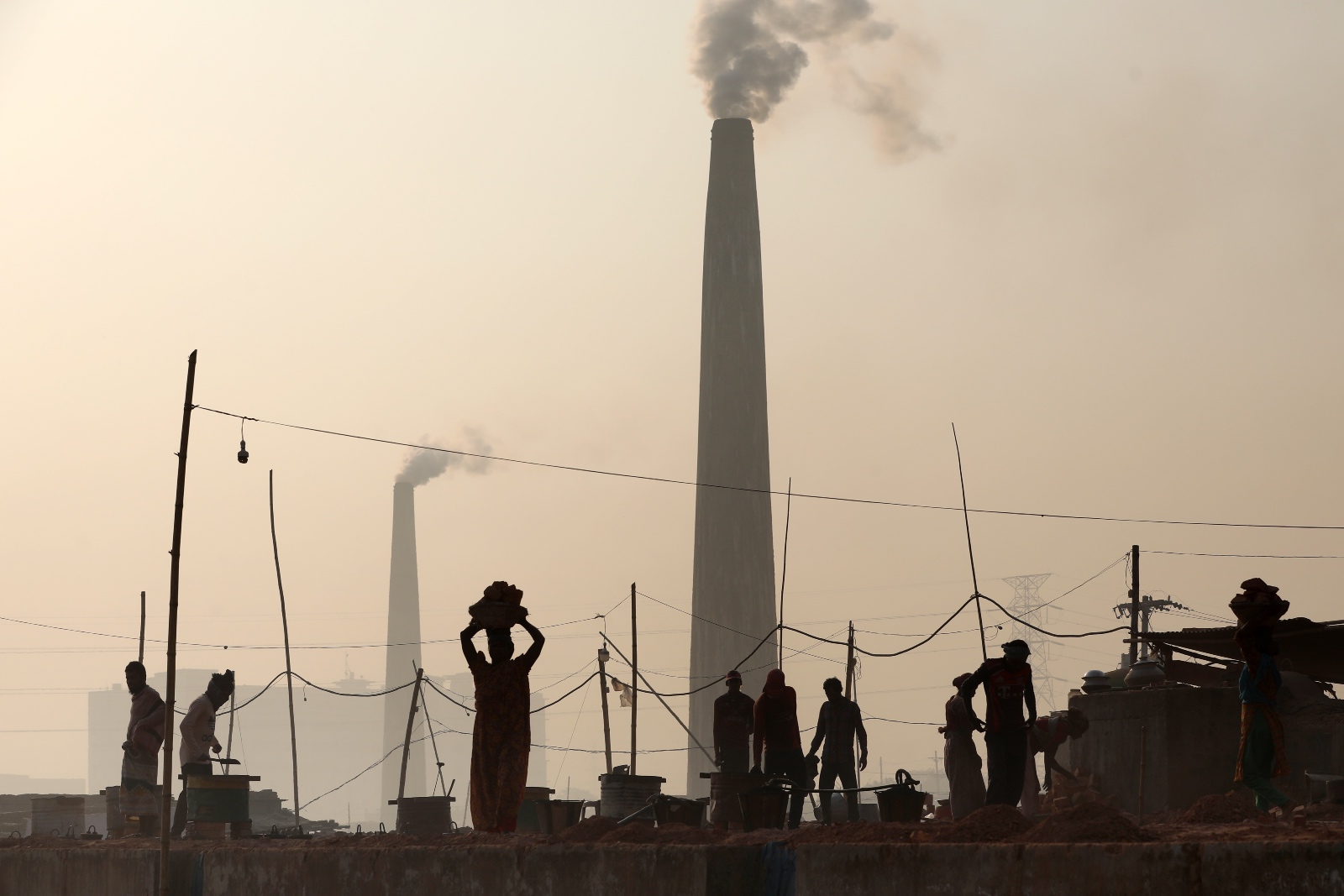No country in the world met the new air quality standards established in September by the World Health Organization, or WHO, according to a new survey that analyzed 117 countries’ air last year.
Even within those countries, almost every city failed to meet the standards. The study, which looked at the real-time air quality of 6,475 cities, found that just 222 of them — less than 3.5 percent — had an average air quality reading that met the WHO’s standard. Nearly 100 cities experienced pollution levels that were ten times higher than the recommended level, according to IQAir, the Swiss pollution technology company that conducted the survey.
It’s the first global air quality report based on the WHO’s new pollution guidelines, which suggest that average annual readings of hazardous fine particulate matter, or PM 2.5, not exceed 5 micrograms per cubic meter.
Using tens of thousands of ground-level air monitoring stations, both public and private, the study aggregated air quality readings to provide both real-time and historic PM 2.5 data for the year. The prevalence of PM 2.5 — a small, hazardous airborne particle that is most commonly emitted by motor vehicles, coal and natural gas-fired power plants, and fire — has attracted public concern during the COVID-19 pandemic because it has been linked to increasing both the risk of contracting the disease and the severity of infection. In its own right, air pollution leads to 7 million deaths per year.
The study found that countries in East Asia, Southeast Asia, and South Asia, which are in the midst of “industrialization and urbanization,” suffered from the highest annual average PM 2.5 concentrations. Central and South Asia in particular were home to 46 of the world’s 50 most polluted cities. Bangladesh was the most polluted country, while New Delhi, India, was the world’s most polluted capital.
While the report does not specifically detail potential solutions to the air pollution crisis, it does call on “policymakers around the world” to craft “air quality legislation and emissions standards to levels that meaningfully reduce the public health risks posed by air pollution.”
It also illuminates a major hole in the way pollution is tracked, which omits key air quality information for countries home to millions of people. Just 13 of the 54 countries on the African continent had a functioning network of air monitoring systems, with gaps also found in South America, Central Asia, and the Caribbean.
“This report underscores the need for governments around the world to help reduce global air pollution,” Glory Dolphin Hammes, CEO of IQAir North America, told CNN. “Governments need to set more stringent air quality national standards and explore better foreign policies that promote better air quality.”
In the United States, where PM 2.5 is estimated to contribute to more than 200,000 premature deaths annually, 80 percent of residents live in areas where pollution levels were above standards, according to the study. The West Coast had the country’s highest PM 2.5 concentrations.
“The country’s reliance on fossil fuels, increasing severity of wildfires as well as varying enforcement of the Clean Air Act from administration to administration have all added to U.S. air pollution,” the report states.



